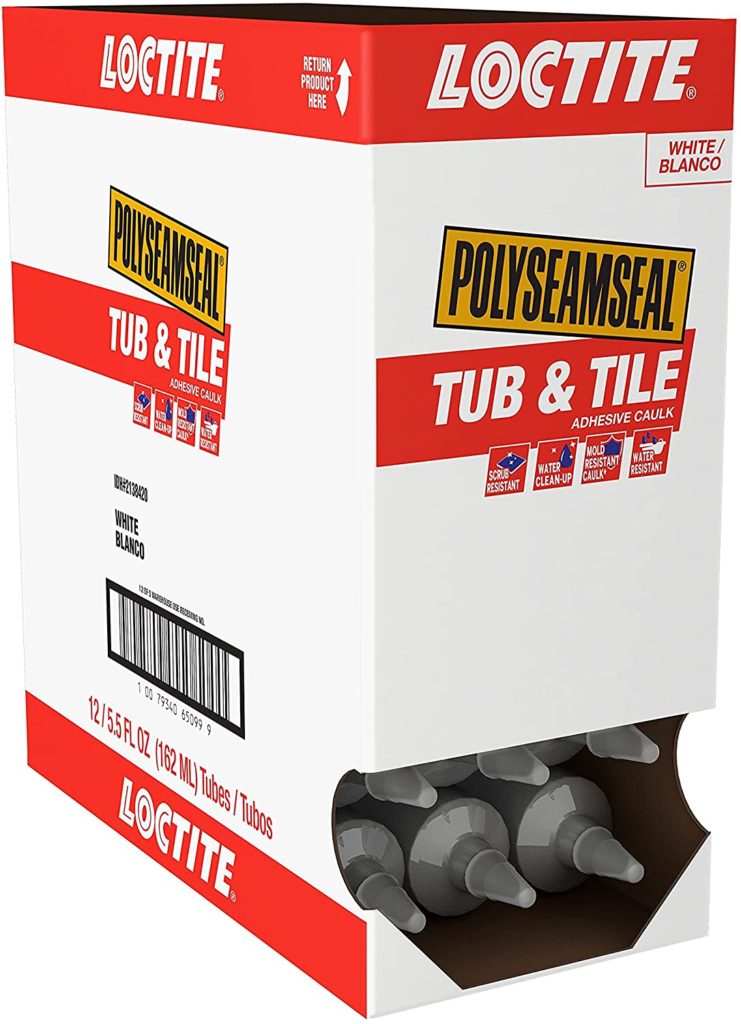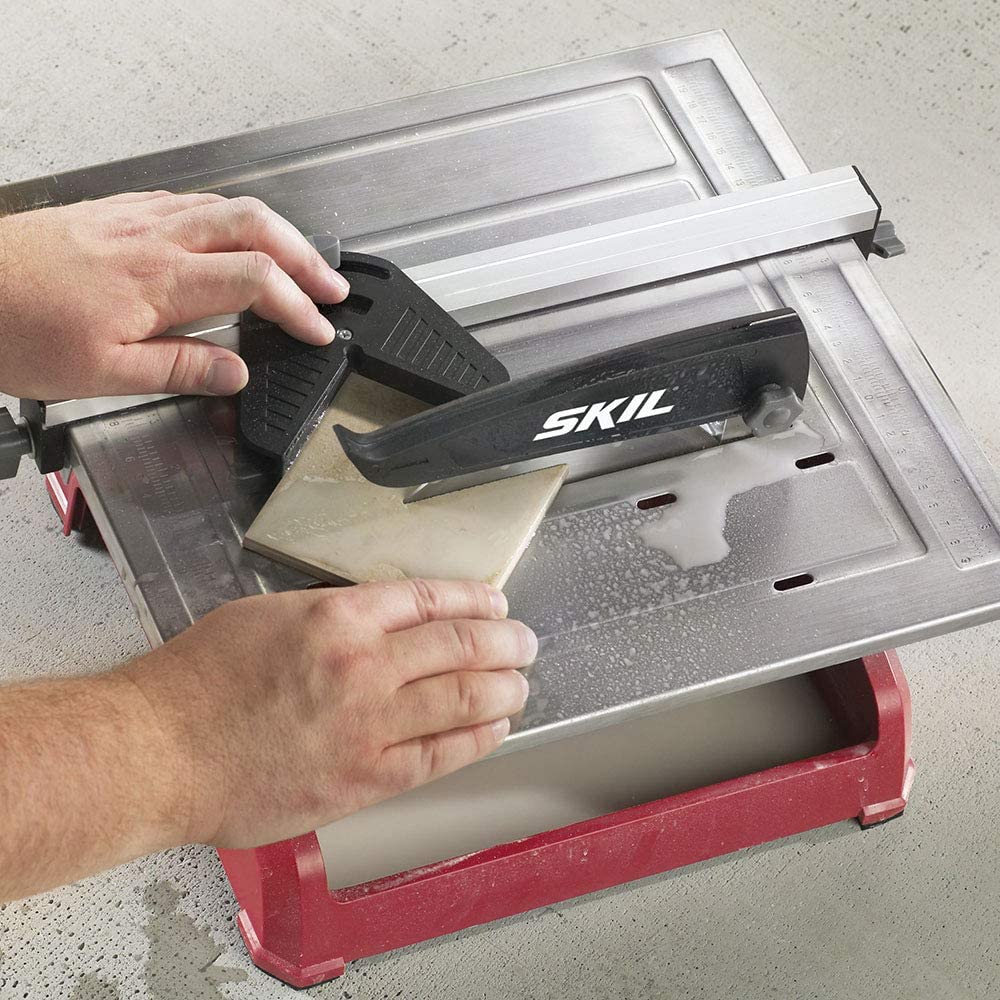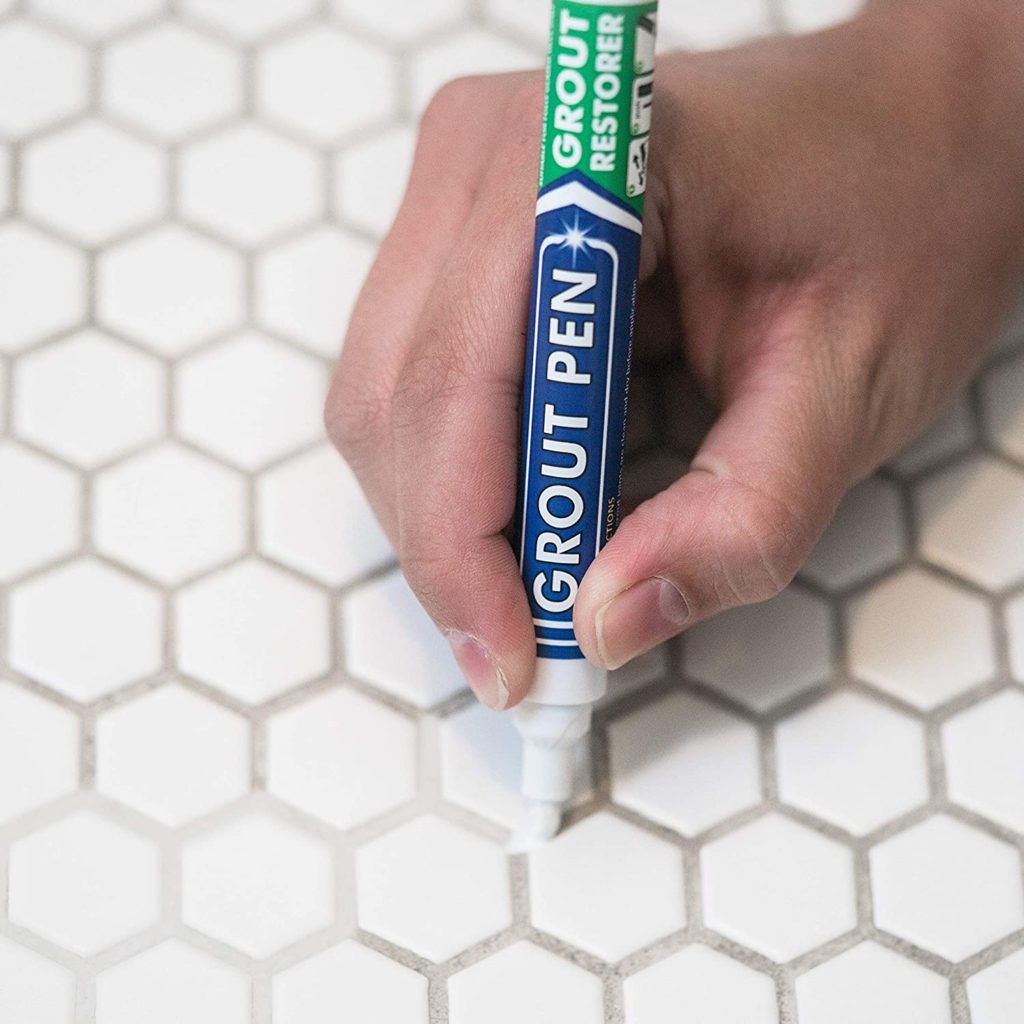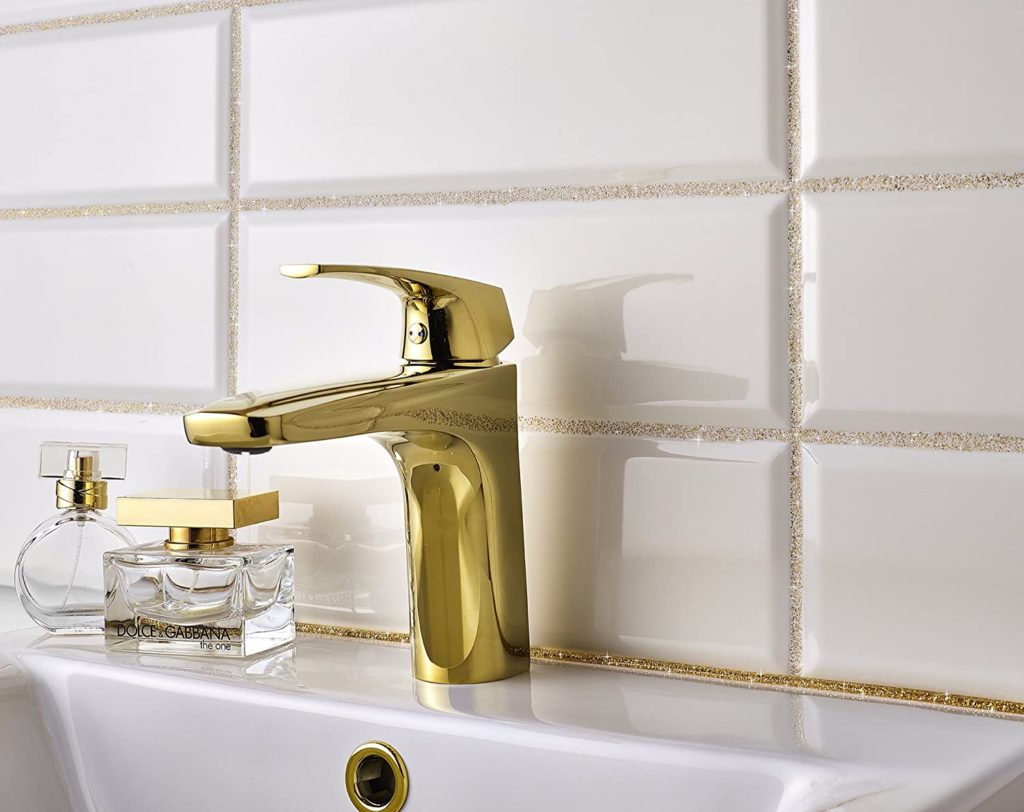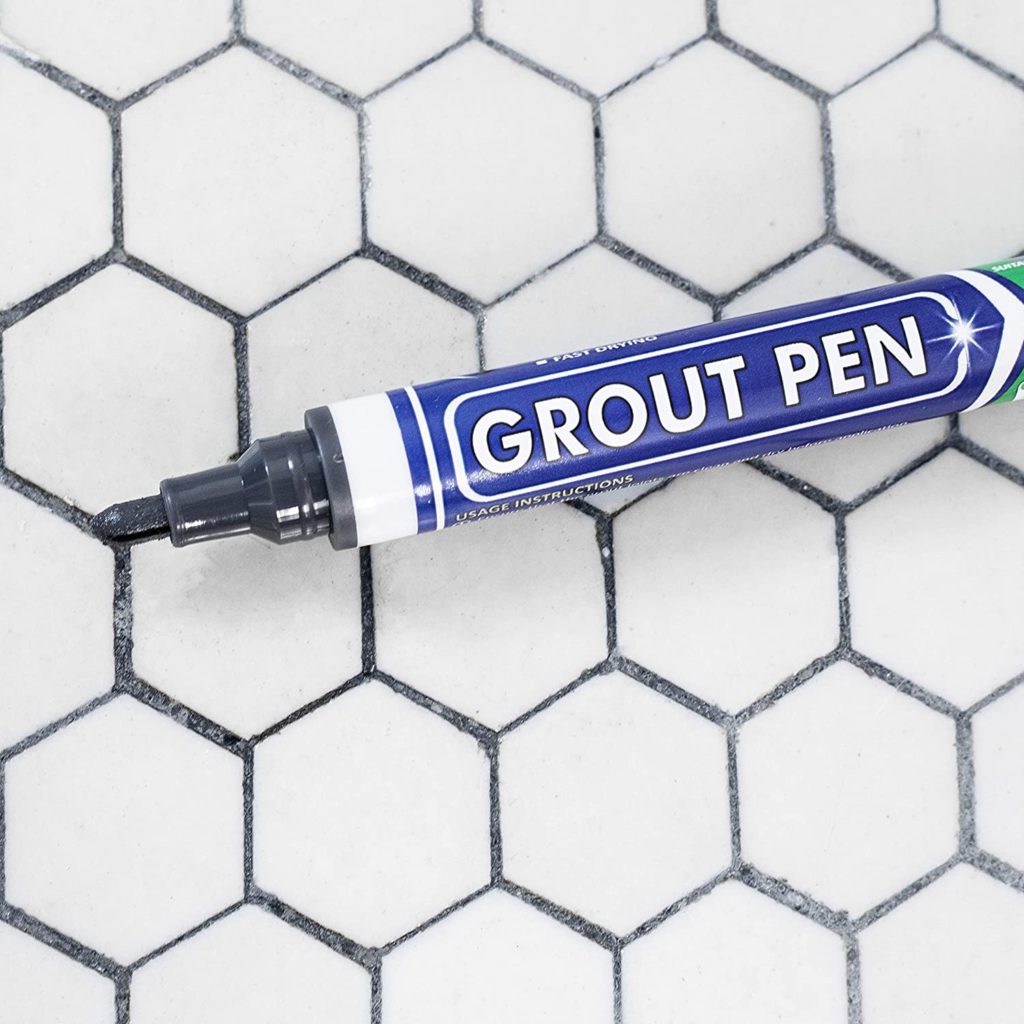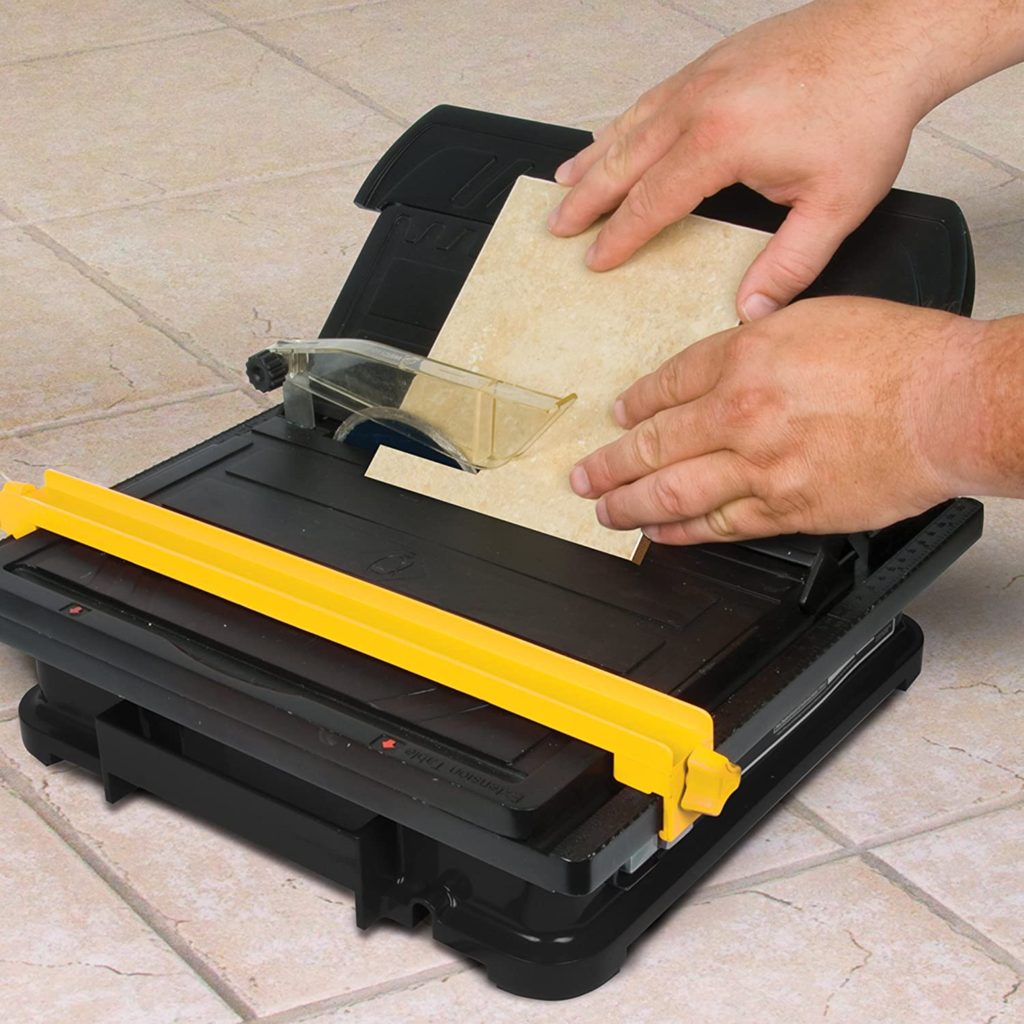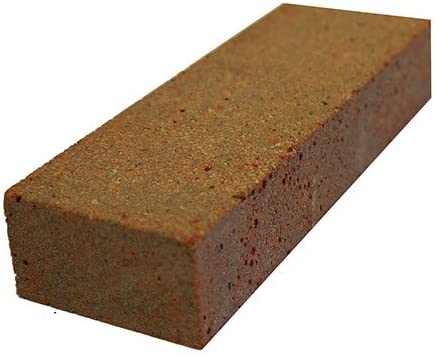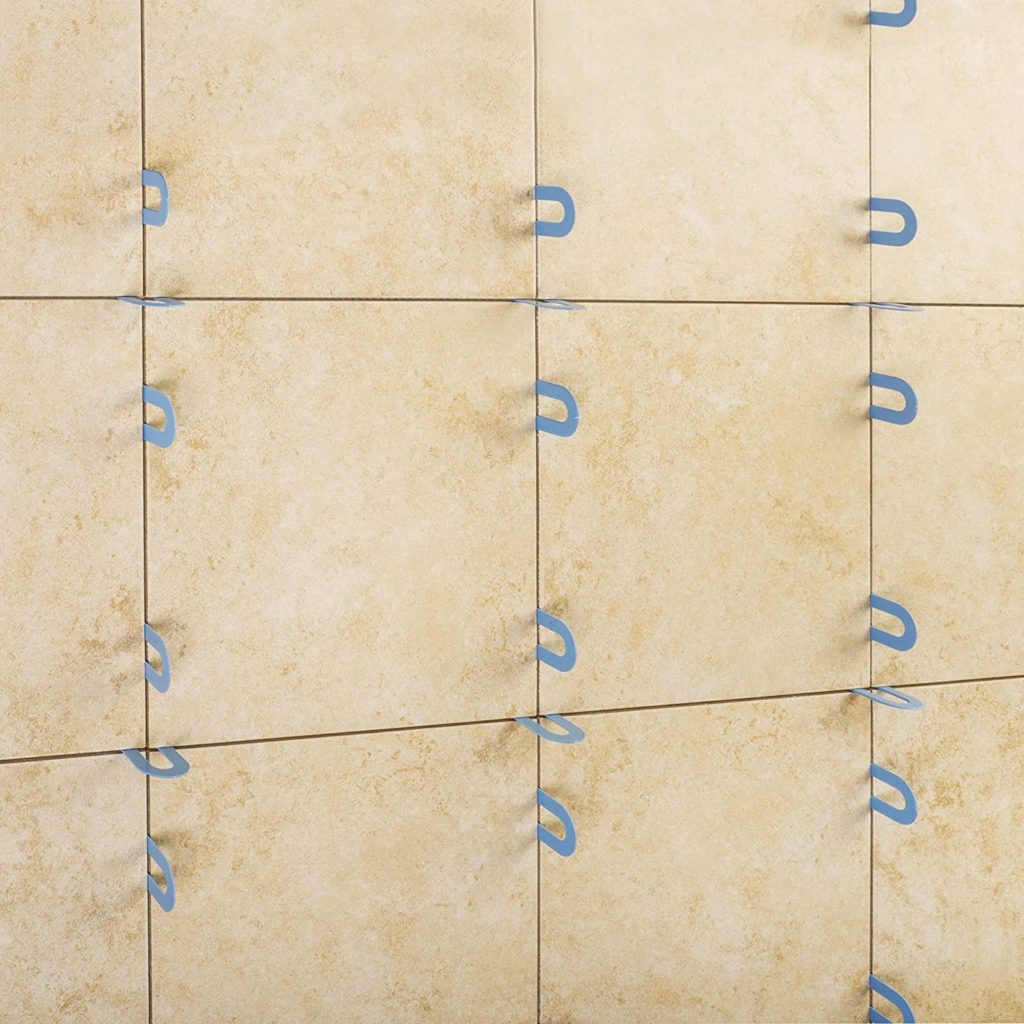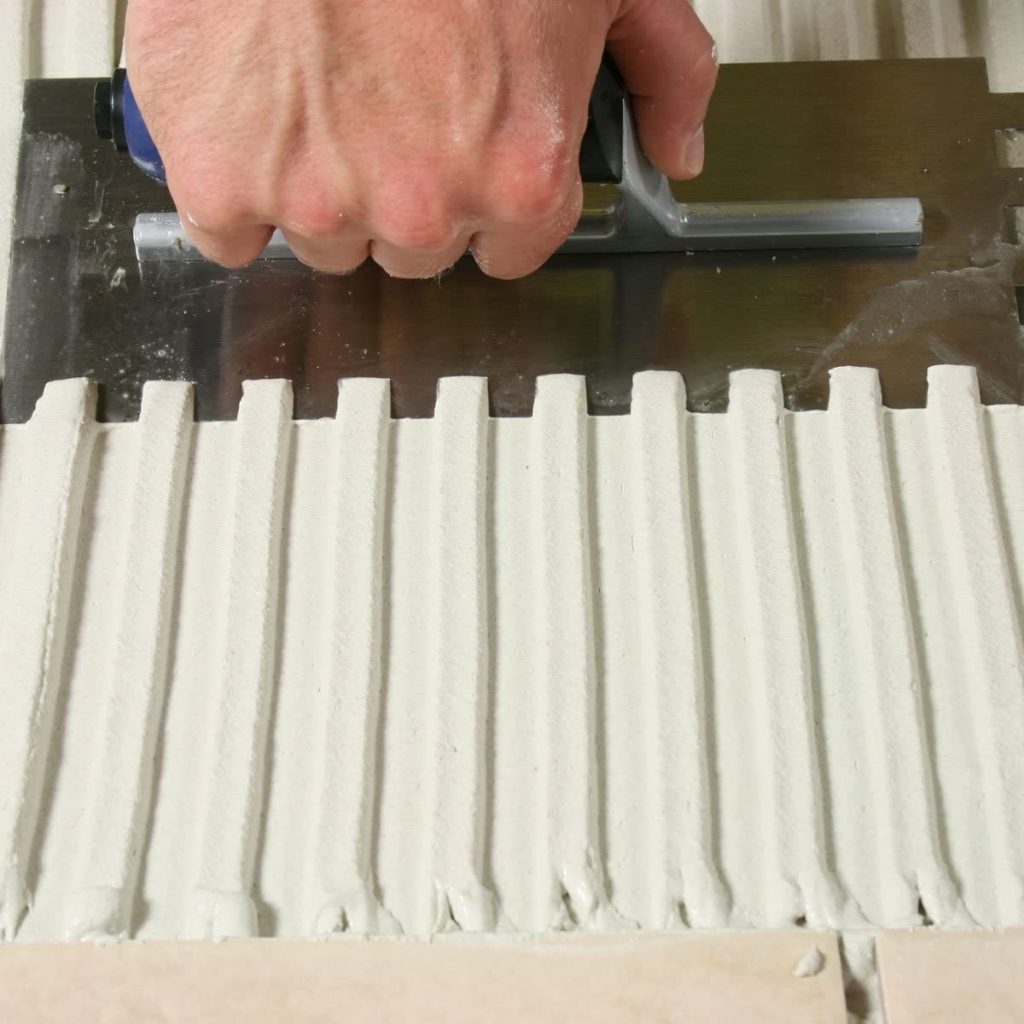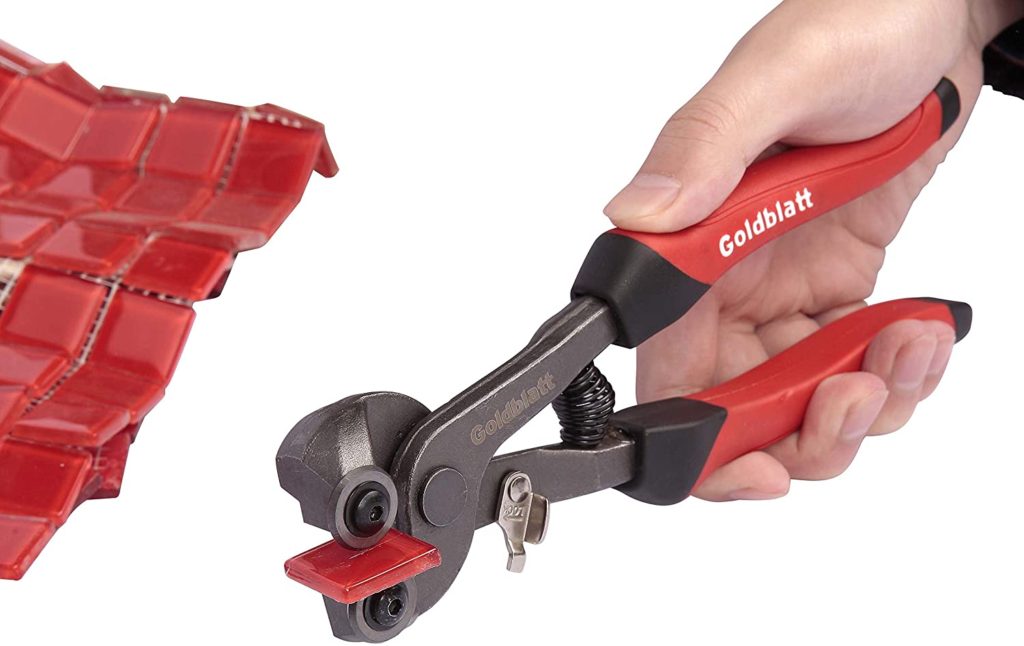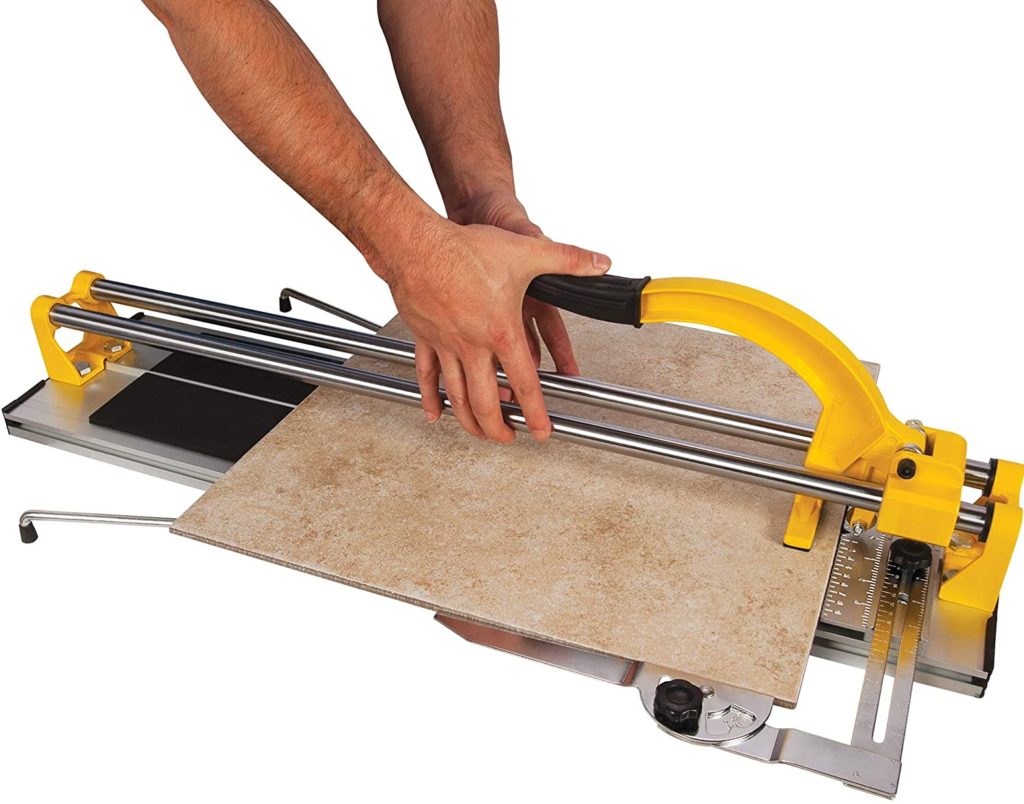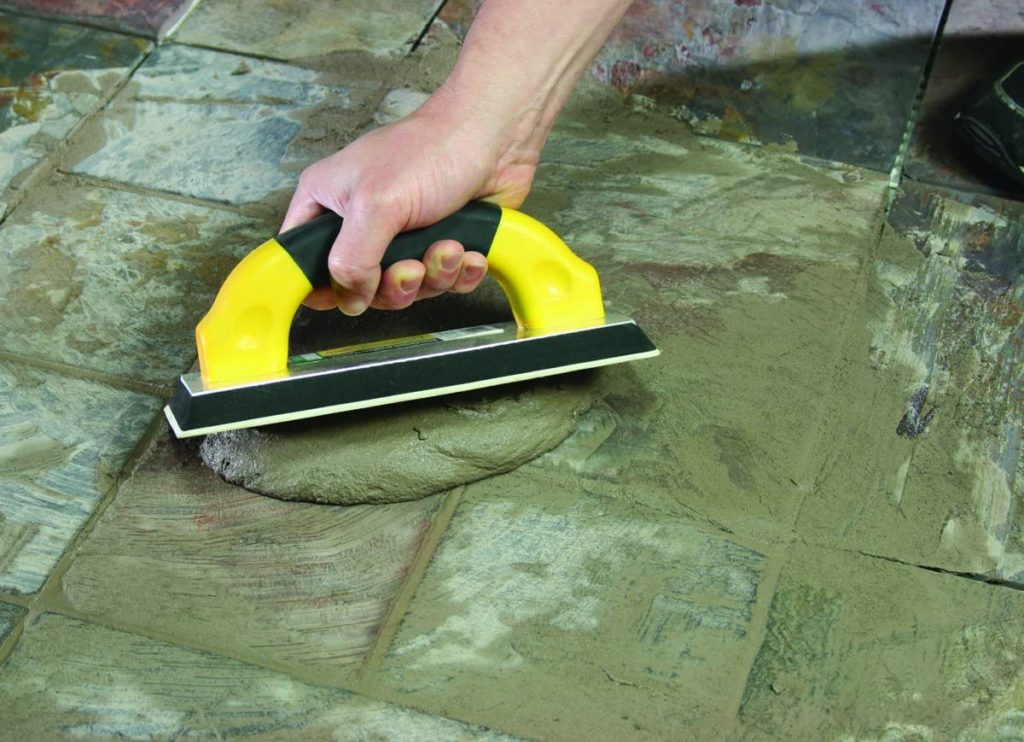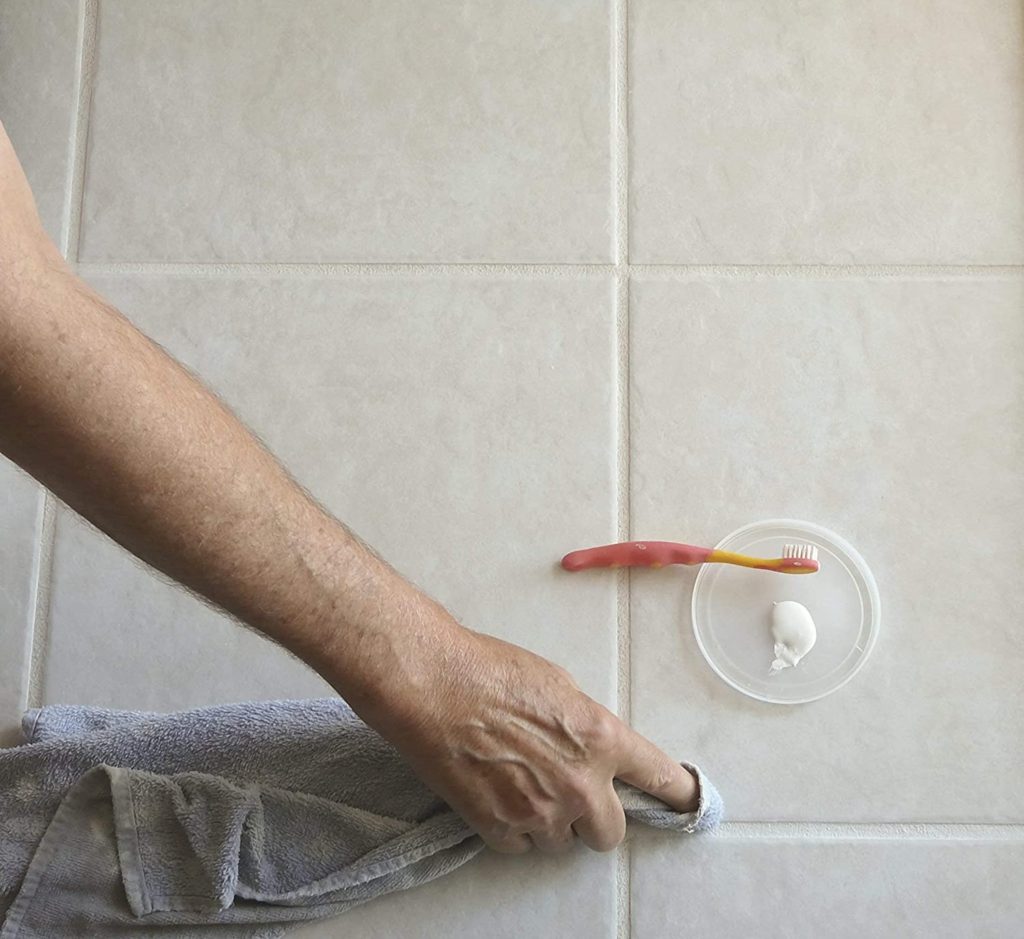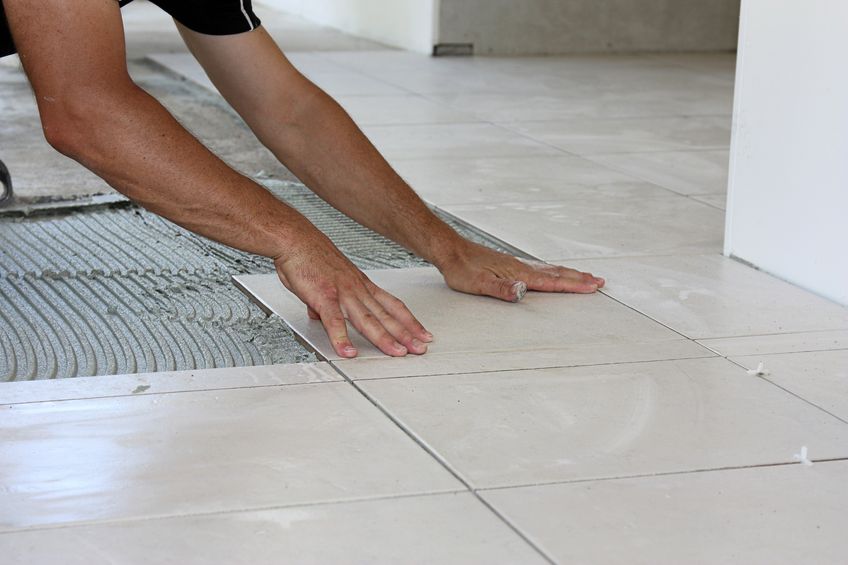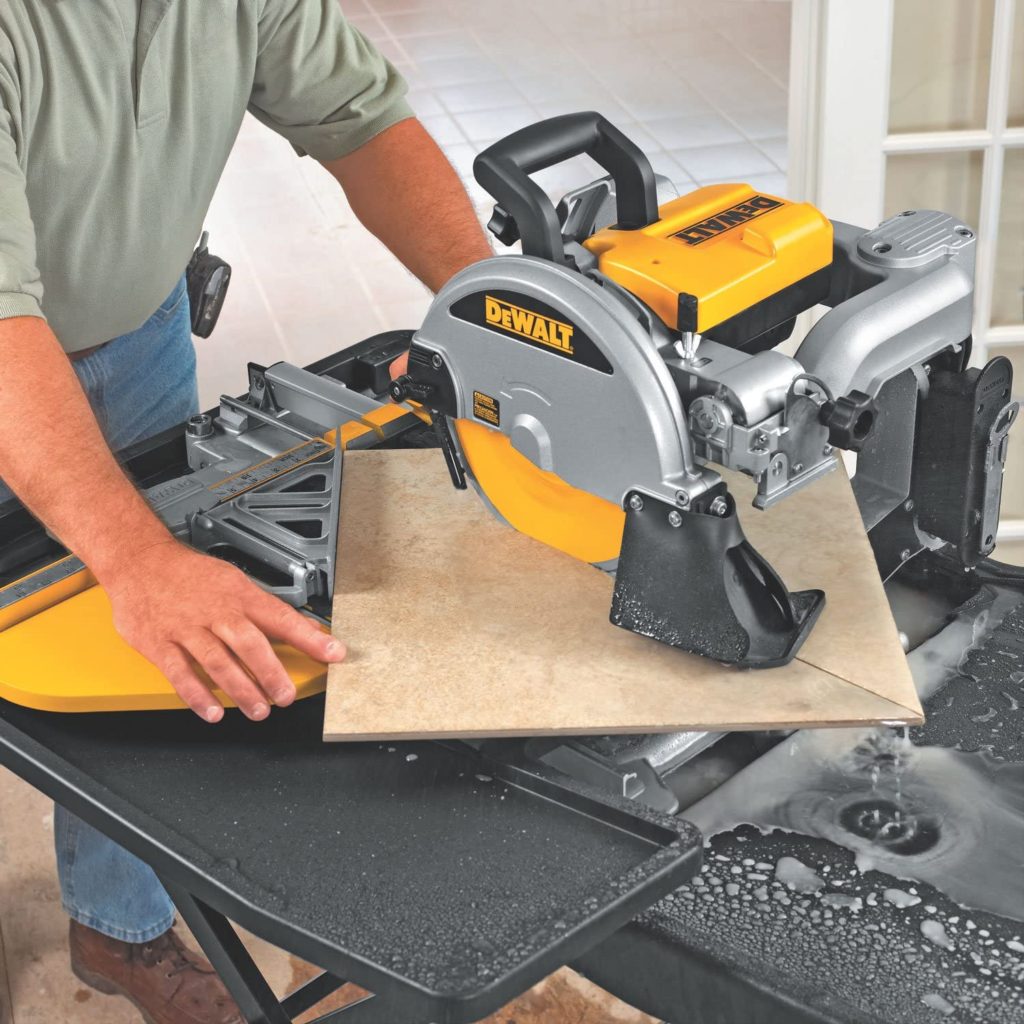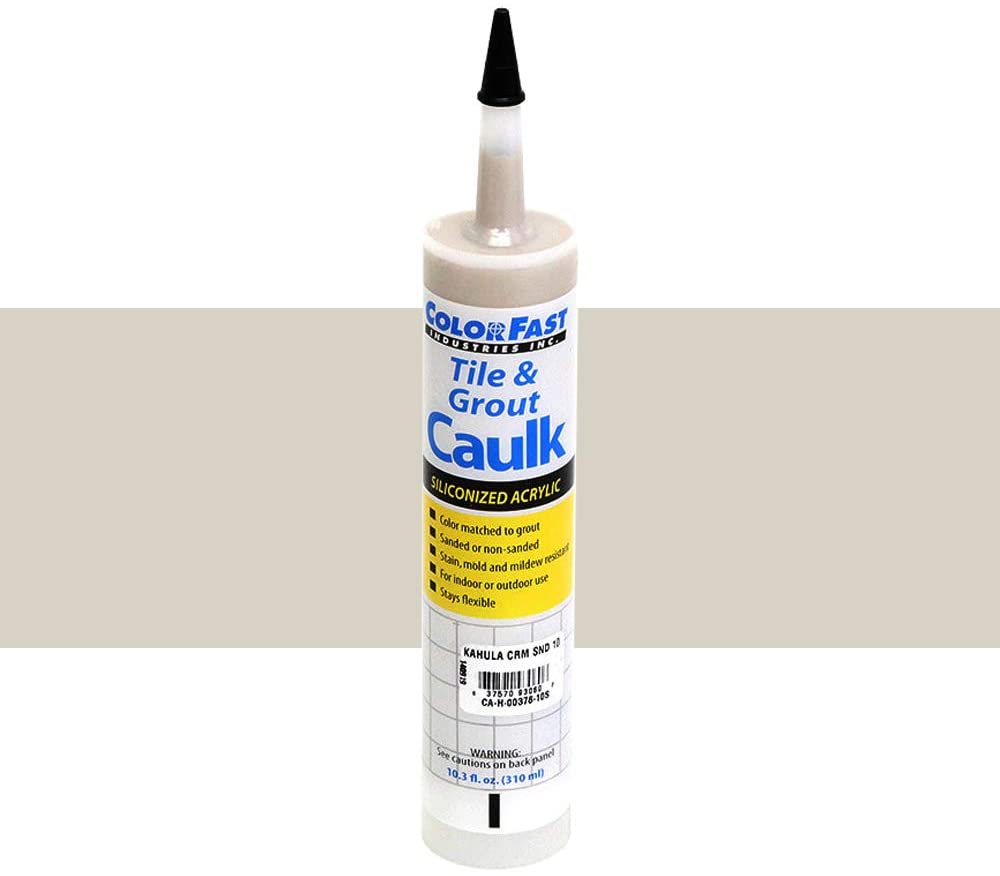
In the main body of a tile installation grout is used in-between the tiles. However different materials naturally expand, contract, and move. These processes can cause tile grout to crack or even cracked tile if the grout is used where two different materials meet such as expansion joints. So instead you’ll need to use a more flexible and forgiving option: caulk.
Where It’s Used
Caulk is the best choice since it allows both the tile material and whatever it is up against expand, contract, or move independently of one another without any breakage. If the tile is installed correctly you will see caulk used where the tiles meet a wall, floor, counter, trim, or backsplash (normally called expansion joints) or where the meet fixtures and features like a shower, sink, cooktop, cutting board, or toilet just to name few.
Silicone
There are two main types to pick from, caulk made from silicone and the latex variety. Silicone is known for its flexibility and the fact that water can’t break it down or get through it. So, when installing outdoor tiles, tiles for a project in an area that will be wet like around tubs, or on materials that are more prone to movement a silicone caulk is the best choice.
Keep in mind that it is harder to clean up after installation so you will need to use solvent to help you do so. Some homeowners may find silicone a little more difficult to work with as well.
Latex
Latex caulk on the other hand is much simpler to use. And like silicone it is waterproof. However, it only requires some soap and water to help you tidy up the area when you’re finished working. There are also options that are a mixture of both silicone and latex so you get the increased flexibility with the added advantage of being easier to clean as well.
Extra Options
Luckily for consumers today, caulk for expansion joints and around fixtures is available in virtually every color. This allows you to use it to match the color of the grout used in the surrounding tiles, the color scheme of your room, or even appliances. There are even sanded and unsanded options as well to help not only match the color of your grout its texture too.
Before You Begin
For smaller jobs, you usually can get away with a squeeze tube of caulk. For anything larger though you’ll need a caulk gun and cartridge. Before you apply it for real though, you should practice either squeezing the tube or pulling the trigger of your caulk gun on a piece of cardboard or scrap pieces from your project until you are able to apply an even bead.
Getting Started
When you’re ready follow the joint and add your caulk in an even and steady manner giving you a bead of a few feet in length. Don’t overdo it though; you are better off applying it again if it’s not enough than using too much caulk at first. Then, use a damp finger to smooth it out. And lastly, take a damp sponge and run it along the joint line to help get rid of any residue or excess caulk. If needed smooth over with your finger again.
Touching It Up
If the final result is smaller than the grout lines of your project you’ll want to add a little more caulk and then repeat the smoothing process. In the case that it is too large use some paper towel to remove the extra caulk and smooth it over again. It’s important that you make any changes right away so that you won’t have to remove everything and start again.
You now know the basics of caulk and how to use it correctly in your tile project. Whether around a sink, tub, in an expansion joint, or any other location that needs a flexible and waterproof seal, caulk will get it done right!
What To Use To Cut Tile
Buy on Amazon Most tile projects will require cutting of some type. There are a few different tools to help you get the job done quickly and easily. So if you’re wondering what to use to cut tile, here are your options. Tile Nippers One of the most basic tools for...
Grout Pen Basics For Guaranteed Success
Buy on Amazon Dirty and dingy grout lines are an unsightly problem. They take from the look of any space and can be downright embarrassing. But with the help of a handy little tool, anyone can make them look like new. A grout pen will give those lines a fresh and...
The Insider’s Guide To Glitter Grout
Buy on Amazon How can you bring your dull-looking grout to life and make it sparkle and glimmer with style? With glitter grout of course! Here’s what you need to know about this wildly popular new option that’s taking walls and floors by storm. Standard Grout Has A...
Add Extra Color To Your Tile Installation With These DIY Tools
Buy on Amazon There are quite a few different ways to add that extra touch of color to your tile project. This could be to make an old installation look new or make sure a new installation looks fantastic from the start. Here are the top tools you can use to get the...
Getting Started With Tile Cutting Tools
Buy on Amazon When working with tile you will often need to make cuts. There are a few different tools you can use depending on what you are doing. Here’s what you need to know about the three most useful choices. Tile Nippers Sometimes you may need to take small...
Stay Safe And Keep Tile Smooth With A Rubbing Stone
Buy on Amazon A tile that has just been cut can have razor-sharp edges. These edges can produce some very painful injuries if not handled with care, and even when they are, accidents can happen. You can help to avoid injury by using a simple tool known as a rubbing...
The Essentials Of Tile Spacers
Buy on Amazon In the past rope, nails, screws, and even sticks were used to keep tiles equidistant from each other during installation. Luckily by the nineteen fifties the need for much more reliable and convenient spacers for tiles helped to bring about the creation...
Tile Trowels To Get The Job Done Right
Buy on Amazon Trowels are a necessity for completing all tiling projects. But of course, you will have to make sure you have the right one for the job at hand to make sure it is a success. So here’s what you need to know about tile trowels before getting started....
Your Basic Tile Safety Kit
Buy on Amazon When working on any kind of home improvement project safety should always be taken seriously and with tile, it is no different. This should be the case regardless of how big or small the job. In fact, more often than not, it is when completing smaller...
Tile Nippers A Must Have Tool For Every Project
Buy on Amazon Every tile setting kit needs a pair of nippers. These basic hand tools are a necessity since virtually every project will need at least a few simple curved cuts. When you need to accommodate things like toilet flanges, faucet valves, doorcases or any...
A Tile Cutter Makes Cutting A Snap
Buy on Amazon Just about all tile installations will require cutting. However, you don’t necessarily need to purchase a tile saw if you will be completing the project yourself. For jobs that won’t demand an extremely large quantity of cuts or very heavy tile, a tile...
Tile Grout: The All-In-One Guide On How To Grout Tile and Clean Tile Grout
Buy on Amazon The spaces in-between tiles need to be protected so that moisture does not get into the backing of the tiles causing damage and ultimately the tiles having to be replaced. This could mean just a few tiles being removed or with a lot of damage all of...
Bring New Life To Your Tile Grout With Grout Colorant
Buy on Amazon As your tile floor, wall, or countertop ages it’s inevitable that at some point its grout will become stained or discolored to the point that no amount of scrubbing or cleaning will help. Light or white-colored grout is particularly vulnerable and this...
Tile Adhesive: Everything You Need To Know!
When installing tile, you'll need to use the appropriate tile adhesive. So here is your complete guide, with everything you'll need to know in order to make sure you choose the right one and ensure your project is a success. Tile Adhesive Basics Tile adhesive is...
The Tile Saw: A Quick Start Guide!
Buy on Amazon Just about every tiling job requires cutting tile. What you will be cutting, how much, and in what manner will determine the tool you use to cut with. Most of the time the easiest and most efficient option is a tile saw. While they may look similar to...
